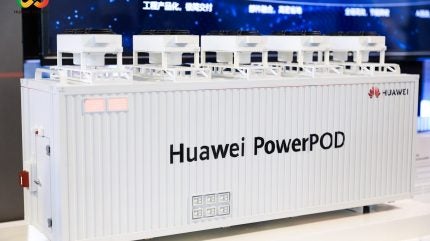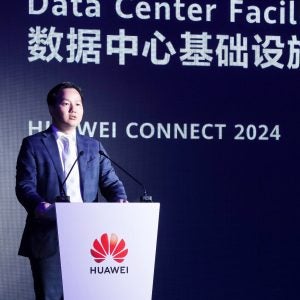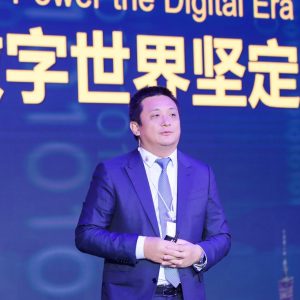
Data centres are experiencing significant growth and transformation, driven by the demands of AI model training and deployment, which require significant computational resources.
According to data from the International Energy Agency (IEA)[i], between 2015 and 2022, data centre workloads grew by 340%, and energy consumption increased by 70%. This growth is expected to continue, with projections indicating that worldwide data centre energy consumption could reach 1,000TWh by 2026, up from 460TWh in 2022.
The tech industry is looking to implement initiatives to make huge data centres more reliable and sustainable, aiming for net zero emissions. Measures include using renewable energy sources, building servers in areas with lower electricity costs and high renewables capacity, creating more efficient cooling systems, and improving data centre design to optimise operations. In fact, AI itself can help with AI-driven optimisation. For example, Google claims that since 2016, DeepMind’s AI has reduced the company’s data centre cooling energy use by 40%.

With these initiatives in mind, the Huawei Data Center Infrastructure Summit focused on how next-generation data centres can be designed to be more sustainable, flexible, and dependable.
“We are standing at an unprecedented historical intersection,” said Steve Kim, President of Huawei Data Center Facility and Critical Power Business, in his opening statement at the summit in September. “Artificial intelligence has introduced the fourth industrial revolution. The global digital economy is accelerating at a speed far beyond our expectations. AI will reshape every corner: smart cities, finance, self-driving, manufacturing, logistics. AI big models will also evolve from single-modal to multi-modal with computing power and data accelerating their development into new productivity.”
Kim highlighted how key challenges for data centres today revolve around ensuring security, reliability, flexibility, energy efficiency, and environmental sustainability amid rapidly evolving computing demands and technological changes.
The growing energy needs of data centres
Ensuring the safe and reliable operation of data centre infrastructure is a top priority for the tech industry, with many sectors depending on such data centres. However, high power consumption challenges, especially for AI applications, raise concerns about whether existing power grids can support growing energy needs.
With the growing use of lithium-ion batteries in data centres, their safety has become paramount. Ensuring this safety involves not only selecting reliable battery cells but also considering remote deployment. Further, high-power density servers require flexible and super-efficient cooling solutions that have just a few minutes to address power outage issues before overheating.
Rapid technological advancements in computing also make it difficult to plan long-term data centre infrastructure. Therefore, there is a need for data centres to be able to evolve to accommodate changing computing needs. And with the high energy consumption of data centres raising concerns about their environmental impact, both in construction and floor space, there is an urgent need for green or low-carbon energy solutions.
Top ten guidelines for data centre construction

Addressing these challenges, Bob He, Vice President of Huawei Digital Power and President of Huawei Data Center Facility and Critical Power Product Line, delivered a keynote speech embracing the intelligent computing era.
“We believe that the future intelligent computing data centre should have three elements, firstly, the most important, reliability. Second, flexibility. Third, sustainability,” He said.
He then shared his experiences within the data centre sector, as well as how Huawei sees the future construction of such centres, outlining his ‘top ten’ construction guidelines for intelligent computing centre facilities.
1. Isolated energy storage. Huawei proposes the isolation of energy storage systems for lithium batteries in data centres, ensuring safety by separating electrochemical storage from IT services. If installed inside a building, it must meet requirements for fire resistance, water fire extinguishing and emergency ventilation.
2. Distributed architecture. Distributed deployment of electromechanical equipment in a single container can minimise fault domains and eliminate service impact by preventing the spreading of faults.
3. Continuous cooling. Data centres must provide continuous cooling capabilities to prevent service interruptions.
4. Choose high-reliability products. He emphasised the importance of safety and reliability in choosing products and solutions, rather than price. To create safe and reliable products, significant investment in R&D, production, design, materials, testing, and service is needed, he said.
5. Professional services. Proactive and professional services, from deployment to maintenance, aim to minimise risks and ensure long-term system reliability.
6. Intelligent management. AI and intelligent technologies can enhance data centre reliability by preventing power failure, fire, and high temperature issues.
7. Decoupling of subsystems. Subsystem decoupling can be used in the intelligent computing era to ensure flexible data centre evolution and on-demand construction of key subsystems.
8. Flexible architecture. Data centre standardisation, modular design and prefabricated modules enhance architecture flexibility to facilitate flexible evolution, smooth capacity expansion and quick delivery of intelligent computing centres.
9. High density and efficiency. High density and efficiency will be key features of green and low-carbon intelligent computing products moving forward, says Bo.
10. Air-liquid convergence. Liquid cooling is crucial for high-density intelligent computing centres, reducing cooling capacity demand, simplifying delivery, and improving energy-saving performance through air-liquid convergence and adjustable ratios.
Huawei’s innovative FusionPower9000 solution
Based on these ten principles of data centre design, Huawei is launching an intelligent computing-oriented, cutting-edge power supply solution designed specifically for large data centres. Huawei’s FusionPower9000 features a fully decoupled architecture, with a power supply system in one container that can be deployed outdoors, reducing time-to-market from 28 to just 18 weeks. With support for phased construction and on-demand capacity expansion, the FusionPower9000 is highly reliable and adaptable.
He explains that this solution fulfils the ‘top ten’ construction guidelines criteria. Crucially, the solution is safe, reliable, flexible, and low carbon.
The same is true of Huawei cooling, which focuses on reliability and is oriented towards liquid cooling. “The water pump and key components are specially designed based on the risk analysis of Huawei data centres,” says He. “To provide the most reliable cooling solution for future intelligent computing. Huawei’s cooling system, the CDU product, is designed for reliability, offering a zero-interrupt system.”
Huawei also provides professional services for intelligent computing, using an outlier algorithm to track user usage and analyse anomalies, ensuring users are warned of any issues in advance. Huawei also offers lifecycle maintenance tools for lithium batteries, UPS power distribution and temperature control systems. With a large number of service personnel and thousands of service partners worldwide, Huawei provides full lifecycle security protection and reliability maintenance for the entire intelligent computing data centre, says He.
He wrapped up the summit by reminding everyone that the industry needs to build future data centres that are more secure and reliable, focusing on collaboration and innovation.
“At the core, we believe that the whole industry has reunited with the consensus that we still need to build future data centres to become more secure and reliable,” he added. “Therefore, I hope to work with you to face a lot of opportunities and challenges in the future. I wish you better and better business development.”
Click here for more information on Huawei’s innovative FusionPower9000 solution.
[i] https://power.globaldata.com/Analysis/details/thematic-intelligence-deep-dive-into-the-environmental-impact-of-data-centers

